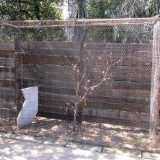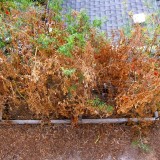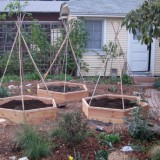
Chestnut. Ellen Isham Schutt, 1913.
Over the past few months I’ve been reviving my long lost drawing hobby, partly as a way to fend of the temptations of phone addiction but also as a way of training myself to take the time to really see what’s around me. Anyone who has tried to draw knows that what it teaches is to observe the world without the preconceptions imposed by language. Before the advent of inexpensive photography, drawing had a central role not only in everyday life but also in science. The United States Department of Agriculture’s online collection of watercolor illustrations of fruits and nuts demonstrates how scientific illustration can be both useful and beautiful.
The collection spans the years 1886 to 1942. The majority of the paintings were created between 1894 and 1916. The plant specimens represented by these artworks originated in 29 countries and 51 states and territories in the U.S. There are 7,497 watercolor paintings, 87 line drawings, and 79 wax models created by approximately 21 artists. Lithographs of the watercolor paintings were created to illustrate USDA bulletins, yearbooks, and other publications distributed to growers and gardeners across America.

Rimmer Apple. Deborah Griscom Passmore 1901.
The collection showcases the diversity of fruit and nut varieties before industrial agriculture took it all away and replaced it with easily shipped but tasteless produce.

Pomegranate. Mary Daisy Arnold, 1932.
The human eye can see and perceive things that a camera can’t and the artists who made these exquisite watercolors must have had an encyclopedic knowledge of the fruits and nuts they portrayed. The collection has 3,807 images of apples alone.
Should you have some blank walls in need of art let me point out that all of the images are available in high resolution.
Support Root Simple
Drawing Your Life: Learn to See, Record, and Appreciate Life’s Small Joys. Observe. Record. Reflect. Create a visual record of your days. Informed by the author’s personal philosophy of “Sustainable Creativity,” this guided journal encourages creative people-from doodlers and sketchers to fine artists and graphic designers-to develop their artistic impulses and discover their own inspirations through observing and recording-in pictures and words-the ordinary objects in their lives. The book comprises prompts and ideas for things to draw, books to read, items and ideas to collect, and adventures and encounters to pursue.






Absolutely gorgeous. Thanks!
Thank you!
Interesting to see the pictured illustrations are by women
I was going to point out exacty that! Also, that apparently it´s only women who remark on that fact… sometimes I feel like living in a parallel universe. Mmmmhhhh
Perhaps it is mainly women who know that the careers of many talented botanical illustrators (such as Beatrix Potter) were blocked because they were women.
These are beautiful. Another artistic medium for botanical study was glass-blowing. I urge anyone interested who has the opportunity to visit the Boston/Cambridge, Mass. area to check out the glass models at the Harvard Museum of Natural History. They are astonishing.